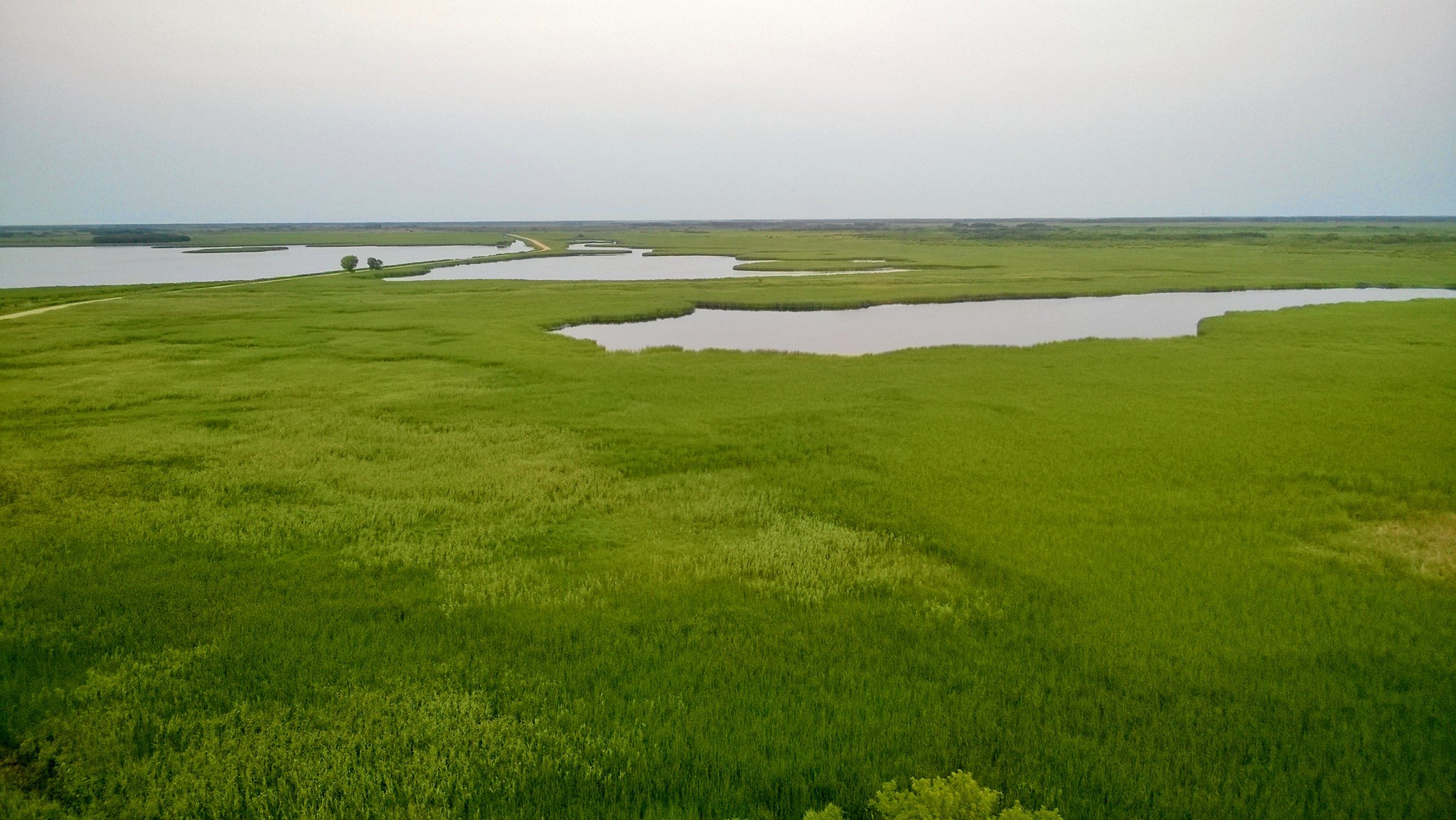Bemidji crew works Agassiz National Wildlife Refuge


By: Sawyer Denning
Photo credits: Will Jacques
The sun rose quickly through a clear sky, burning off all the dew that settled earlier in the morning. We were walking through a wooden trail, following our project host in the Agassiz National Wildlife Refuge to look at the work site, when the woods suddenly opened up to a prairie like a sea of grass spreading outward, the horizon only broken here and there miles in the distance by aspen and oak forests. Our job was to help create an oak savannah landscape by painting herbicide onto the aspen trees in one section of the land. We became familiar with the location, ate lunch, and began painting trees that afternoon.
Traveling to and from the work site during the three weeks we were there, my crew mates and I saw a lot of wildlife. In morning when sunlight peeked under clouds, giving everything a golden cast, we drove our truck over gravel roads flanked on either side by marsh pools and sedge meadows, sometimes disturbing a large brace of ducks; they took flight suddenly and for a moment the flock seemed to shimmer, owing to each beat of every duck’s wings, alternating dark and light, and also because they were so densely packed, until the mass broke apart and formed lines, shrinking into the horizon, joined by pelicans and herons.
“That’s probably the most ducks in one place I’ve ever seen in my life.”
“Yeah, it’s a pretty good number.”

They continued flying, well after our truck passed the spot of open water where they were all gathered, until they were specks in the distance. They were unlike the geese, who even two or three feet from the moving truck, sauntered and eyed us sidelong as if offended to have to move out of the way for us.
The refuge was home to more than waterfowl. On jogs I took after work, often joined by crew mates, we ran past grazing cows, donkeys, llamas. On our way back to Bemidji, our crew spotted black bear boding across a field, also disturbed by our truck’s movement. Another time, a bobcat rounding a corner of the road ahead of us and disappearing into the cattails. Dragon flies in bright yellows, reds, and blues landed on our shoulders, arms, and chests, waiting for our bodies to attract a mosquito or fly for a meal. Clouds of mosquitoes in the thick of the forest work site produced a low, steady drone which never went away: we could only lose awareness of them when we got invested in discussion (whether it was about movies we had seen, food we wanted to cook, or dreams about our future…).
We were also a curious specimen of wildlife: our heads bobbed bright yellow or blue in our helmets, hands green or blue with latex gloves; we emitted creaks and groans in imitation of songs we heard on the radio and left rings of blue and green on aspen trees. We were different in some ways from the wildlife we observed in Aggasiz, but alike in other ways: we padded in the dirt from tree to tree like the porcupines we saw (one in a tree, another in the trail, its back swelling as I approached), took flight in our truck like a bird, brushed at our faces like bears, and buzzed in one another’s ears like mosquitoes.